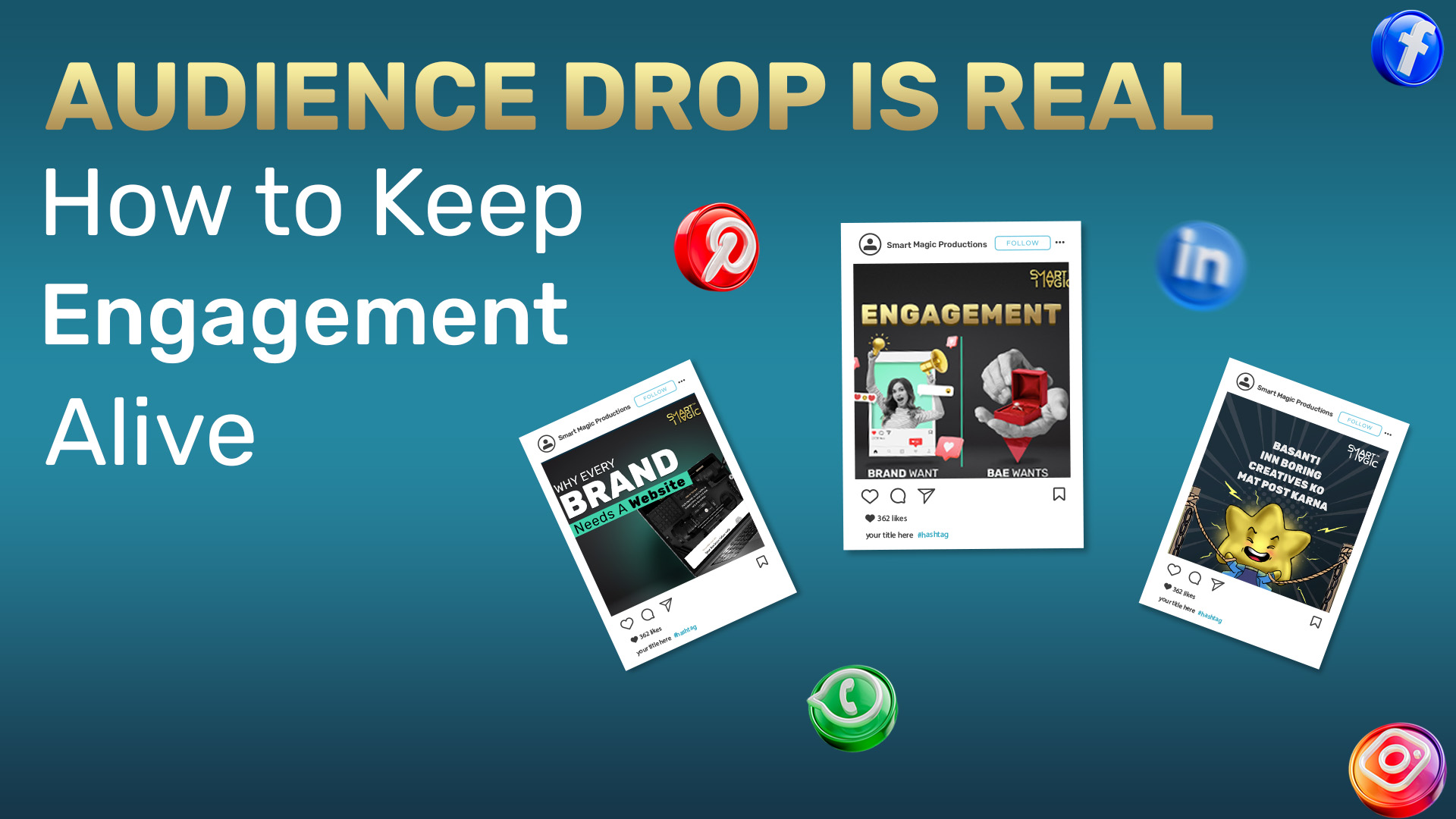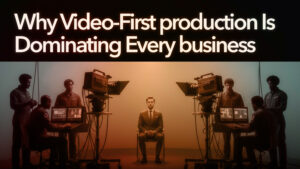Introduction
Audience drop often occurs due to ad fatigue. It happens when people see the same ad too many times for it to have any impact. Just like listening to your favourite song on repeat: exciting at first, but eventually, you’ll skip it. The same goes for digital marketing campaigns.
For example, remember those streaming app ads or food delivery offers you kept seeing over and over again on YouTube or Instagram? The first time you saw it, it caught your attention; the third/fifth/eighth, it just blends into the background.
To keep an audience engaged, brands need fresh storytelling and creative formats.
How to identify Audience drop.
Why does Audience Fatigue happen? Audience drop occurs when your audience is repeatedly exposed to the same creative elements. It means viewers no longer engage with once impactful ads, leading to declining engagement and conversion rates.
The main culprits behind the audience drop are overexposure. When audiences see the same or similar ads from brands repeatedly, their brains become accustomed to them. These creatives no longer excite them, so they stop paying attention.
Audience drop doesn’t happen overnight. It’s a gradual decline caused by repetitive exposure, creative stagnation, and ineffective campaign strategies. These factors chip away at effectiveness, stifling engagement and hurting return on investment (ROI).
Signs you’re experiencing audience fatigue
1. Declining Click-Through Rates (CTR)
Your audience is seeing the ad but not acting. This often signals creative repetition, message irrelevance, or simply overexposure.
2. Increasing Cost Per Mille (CPM)
Platforms charge more when your ads underperform. Rising CPMs suggest your audience isn’t engaging, making your placements less efficient.
3. Falling Conversion Rates
Even if clicks are steady, fewer people are converting. This suggests a misalignment of messages or a decline in perceived value.
4. Increased Frequency Scores
If users are seeing your ads too often, they may tune out or worse, develop ad fatigue. High frequency without fresh creativity is a red flag.
5. Negative Audience Feedback
Comments like “seen this already” or “stop showing me this” are signals that your content is wearing thin. Listen closely, this is gold for optimisation.
6. Lower Engagement on Social Media
Likes, shares, and comments taper off when your content loses emotional resonance. It’s a sign your audience needs something new to care about.
Best Practices to prevent Audience drop
- Refresh creative assets:
Regularly update ad copy, headlines, and visuals with new designs, messaging, and calls to action (CTAs) to maintain audience interest and prevent boredom.
- Rotate different ad formats:
Experiment with various formats, such as videos, carousels, or interactive ads, to keep the user experience fresh & engaging. - Use dynamic creative optimisation (DCO):
This allows you to create ad variations automatically by combining different headlines, images, and CTAs, so other users see unique combinations, which keeps content fresh. - Set frequency caps:
Implement frequency caps to limit the number of times a single user is exposed to an ad within a defined timeframe, thereby preventing overexposure and saturation. - Segment your audience:
Divide your audience into smaller, more targeted groups and rotate between these segments to reduce the risk of overexposure to any single group. - Expand your audience:
Broaden your targeting criteria or create lookalike audiences to introduce your ads to new people.
- Use sequential messaging:
Deliver different messages to the audience at various points in their journey, providing a more personalised and less repetitive experience. - Exclude past users:
Temporarily exclude audiences who have already engaged with your ads to prevent them from seeing the duplicate content repeatedly. - Monitor key performance indicators (KPIs):
Keep a close eye on metrics like click-through rates (CTR), cost per impression (CPM), and conversion rates to identify when fatigue is setting in. - Schedule campaigns strategically:
Use scheduling tools to automate ad display times and ensure ads are shown at optimal moments, aligning with seasonal trends or events. - Audience optimization
Audience optimisation isn’t just about reaching more people; it’s about reaching the right people, with the right message, at the right moment. When done well, it transforms social ad campaigns from scattershot impressions into meaningful engagement and measurable impact.
Key Elements of Audience Optimisation
- Audience Segmentation with Purpose
Move beyond basic demographics segment by behaviour, intent, and emotional drivers. This ensures your messaging speaks directly to what each group cares about, not just who they are. - Message-Market Fit
Tailor your creative tone and value proposition to match each segment’s mindset. When the message feels personally relevant, engagement becomes instinctive. - Channel & Format Intelligence
Optimise where and how your audience consumes content. Whether it’s reels, carousels, or email, the format should match their scroll habits and attention span.
- Mapping the Journey
Understand where each user sits in the lifecycle: cold lead, warm prospect, loyalist, or lapsed. Serve content that nudges them forward, not sideways. - Creative Refresh Cadence
Rotate visuals, themes, and CTAs regularly to avoid fatigue. A fresh look or unexpected metaphor can reignite interest and boost performance. - Engagement Recovery Tactics
Re-engage dormant users with curiosity-led hooks, personalised nudges, or exclusive offers. Don’t be afraid to prune disengaged segments to protect overall health.
- Real-time feedback
Track emotional signals, such as reactions, comment tone, and dwell time. Use these insights to adapt quickly and keep your campaigns emotionally resonant.
Conclusion: Keep Your Audience Curious, Not Cautious
Audience fatigue is inevitable when ads stay the same, but it’s not irreversible. By spotting the signs early, refreshing creatives with intent, and optimising audience segments strategically, you can transform drop-offs into renewed engagement.
The brands that win are the ones that adapt faster than attention spans shrink. Keep experimenting, keep listening, and keep your audience curious, not cautious. That’s how campaigns stay relevant and ROI stays strong.
Audience drop is real but reversible. This guide breaks down the signs, causes, and creative strategies to keep your campaigns fresh and your audience hooked. At Smart Magic Productions, we believe every impression should feel like the first.
Because when curiosity drives engagement, brands don’t just get seen, they get remembered.
Ready to keep your audience engaged? Contact Smart Magic Productions





